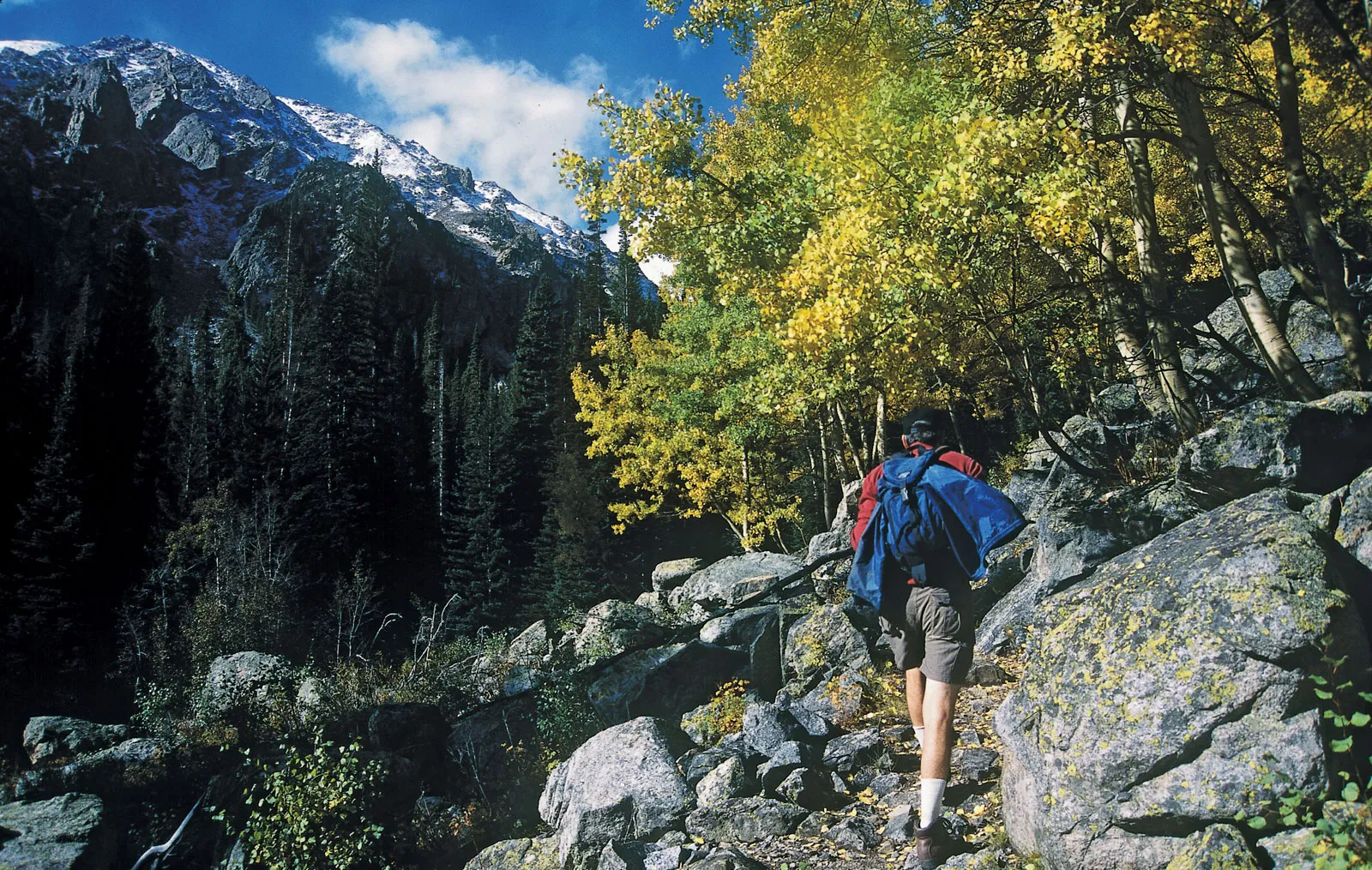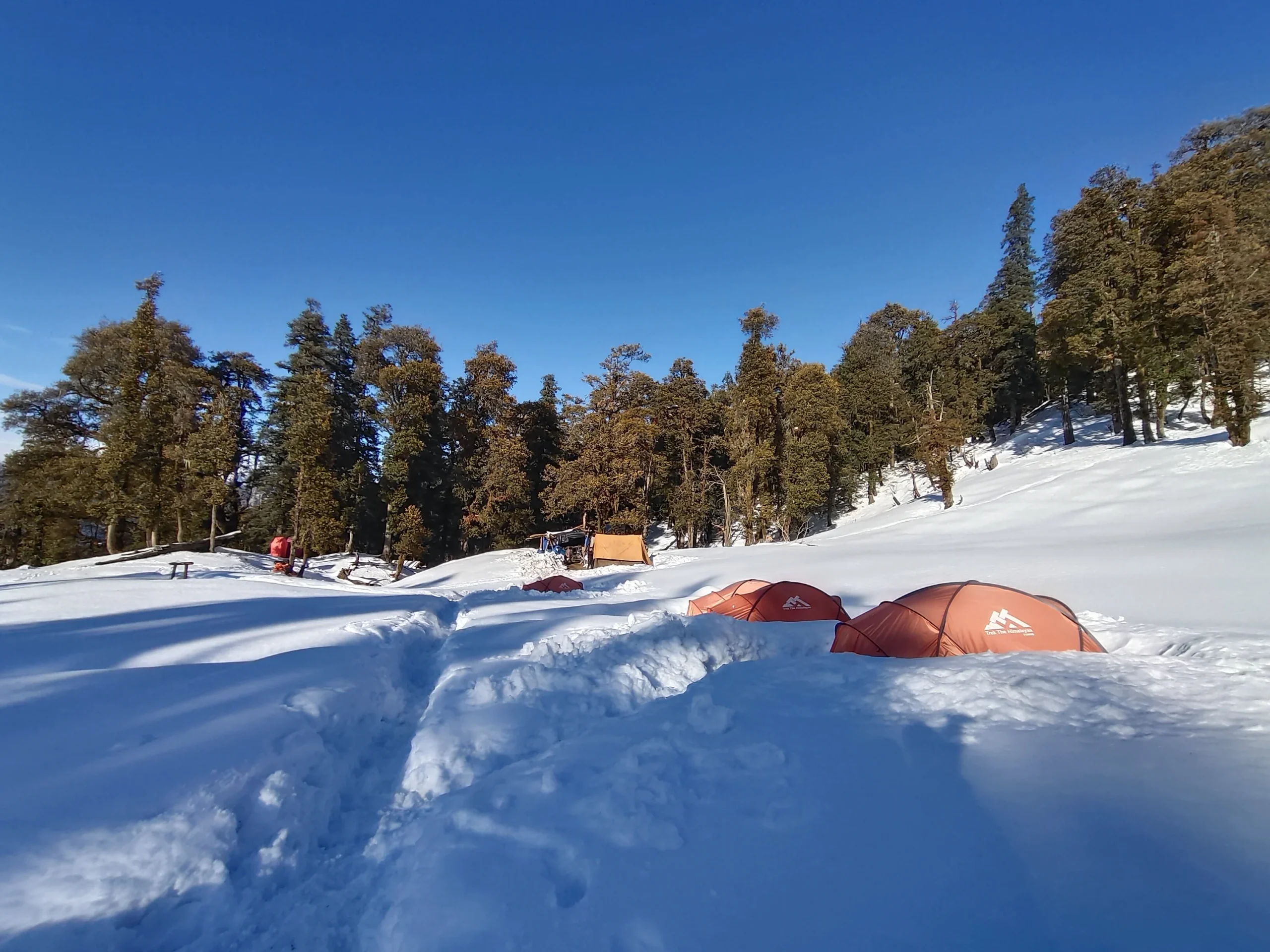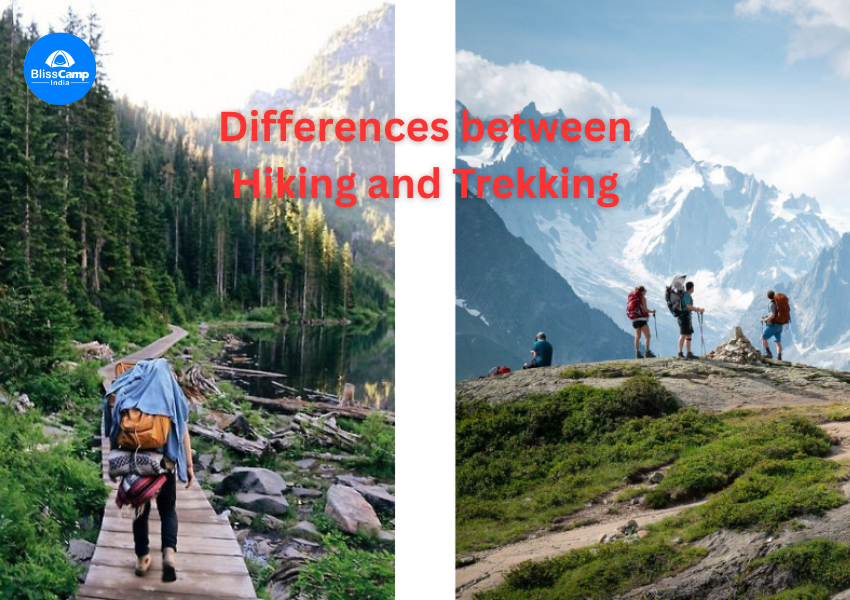Essential Difference Between Hiking and Trekking
When people talk about outdoor adventures, the terms “hiking” and “trekking” are often used interchangeably. But if you look closer, the difference between hiking and trekking go beyond just words — they reflect different experiences, challenges, and goals. Both activities connect us with nature, but the depth and intensity vary greatly.
In this article, we’ll uncover the real difference between hiking and trekking by breaking down each aspect — from terrain and duration to purpose and gear. Whether you’re a beginner or an outdoor enthusiast aiming to explore the mountains, knowing these differences will help you choose the right adventure.
What Do We Mean by Hiking?
Hiking is one of the most loved activities for outdoor lovers. To understand the difference between hiking and trekking, you must first know what hiking really is. Hiking refers to walking on marked trails, usually for a short duration. These trails are often well-maintained, beginner-friendly, and less demanding.
Hiking trips can last for a few hours or a single day, making them perfect for casual explorers who want to enjoy fresh air, scenic views, and physical exercise. Unlike trekking, hiking does not usually require advanced survival skills or heavy preparation. This makes hiking accessible to almost everyone.

What Do We Mean by Trekking?
Trekking, on the other hand, is more demanding. The difference between hiking and trekking become apparent when you understand that trekking involves walking long distances, often through challenging terrains such as steep mountains, forests, or snow-covered passes.
Trekking can last for multiple days or even weeks, requiring overnight stays, either in tents, camps, or remote lodges. Unlike hiking, trekking is not just about walking on a trail — it is an immersive journey that tests endurance, adaptability, and the human spirit. Trekkers often face unpredictable weather, rough paths, and altitude challenges.
Duration and Effort: Key Differences
One of the clearest difference between hiking and trekking lies in the duration and effort. Hiking is typically short-term — from half a day to a full day. Trekking is long-term, extending from several days to weeks.
The effort also varies. Hiking demands moderate stamina, while trekking challenges both physical and mental strength. Trekkers cover rugged trails, carry heavier gear, and prepare for different climates. This sharp contrast explains why many adventurers start with hiking before attempting longer treks.
Terrain and Trails
The terrain highlights major difference between hiking and trekking. Hiking trails are often well-marked, smooth, and developed for safety. They may pass through forests, hills, or countryside paths, but rarely push you into survival-mode situations.
Trekking routes, however, often lack clear markings. They can involve climbing steep ridges, crossing rivers, or navigating snow. Trekkers often explore remote areas with little or no infrastructure, which adds both thrill and challenge to the journey.
Purpose of the Journey
Another angle to understand the difference between hiking and trekking is the purpose. Hiking is generally recreational. It allows people to enjoy a day outdoors, relieve stress, and stay active.
Trekking, in contrast, is more about exploration and endurance. It’s a journey into raw, untouched nature. Trekkers often aim for high-altitude passes, remote villages, or spiritual destinations. This purpose makes trekking not just a physical activity but also a deeply transformative experience.
Gear and Preparation
The difference between hiking and trekking are also clear in terms of preparation. Hiking requires light gear: comfortable shoes, a water bottle, a backpack, and maybe some snacks.
Trekking, however, demands detailed planning and heavier equipment. Depending on the trek, trekkers carry tents, sleeping bags, trekking poles, cooking supplies, and sometimes oxygen cylinders. Adequate training and fitness preparation are also necessary before starting a trek.
Risks and Challenges
When comparing the difference between hiking and trekking, it’s essential to look at risks. Hiking is relatively safe with minimal risks, especially if trails are managed. Still, hikers should be cautious of slips or weather changes.
Trekking brings greater challenges: altitude sickness, fatigue, unpredictable climates, and rough terrains. Trekkers must learn survival skills, stay prepared for emergencies, and rely on strong physical stamina. The reward, however, is experiencing untouched beauty and personal growth.
Experience and Skill Levels
Skill requirements highlight more difference between hiking and trekking. Beginners can enjoy hiking without much experience, as trails are easier and shorter.
Trekking, however, demands prior experience, fitness, and sometimes technical knowledge. Trekkers often train themselves for months before embarking on a long trek. This is why many adventurers begin with small hikes and gradually move on to multi-day treks in high-altitude regions.
Cultural and Natural Immersion
While comparing difference between hiking and trekking, cultural exposure is an interesting point. Hiking often revolves around nature walks and scenic viewpoints. It’s about observing beauty rather than diving into it.
Trekking, however, offers deep immersion. Trekkers pass through remote villages, meet local communities, and experience traditional lifestyles. Along with landscapes, trekking provides cultural richness, making the journey unforgettable.
Best Destinations for Hiking and Trekking
To fully appreciate the difference between hiking and trekking, let’s talk about destinations. Hiking is common in parks, countryside areas, and shorter trails around hill stations.
For trekking, places like the Himalayas are world-famous. In fact, some of the best treks in Uttarakhand attract thousands of trekkers each year. From Kedarkantha to Har Ki Dun, these trails are considered among the best winter treks in India. Adventurers looking for the best treks should always consider their stamina and readiness before choosing a destination.

Which One Should You Choose?
Your choice depends on your fitness, time, and goals. If you want a simple adventure, start with hiking. If you’re eager for deeper experiences, trekking is the way forward. Understanding the difference between hiking and trekking ensures that you pick an adventure that matches your lifestyle.
Hiking prepares you for trekking by building endurance, helping you adjust to trails, and teaching you the basics of outdoor living. Trekking, on the other hand, elevates your adventure level by pushing you beyond comfort zones.
Conclusion
By now, the difference between hiking and trekking should be clear: hiking is shorter, lighter, and recreational, while trekking is longer, more challenging, and transformative. Both offer unique rewards, depending on what you seek in nature.
If you dream of exploring the Himalayas with expert guidance, the best trekking company in Uttarakhand can make your journey seamless. At BlissCamp India, we believe in creating unforgettable trekking adventures that connect you with mountains, culture, and your own inner strength.


